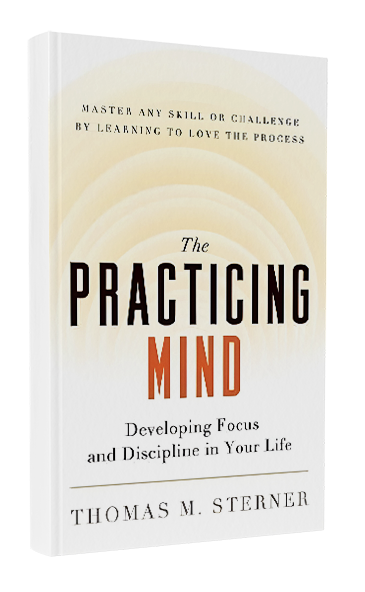Hireling Hypnosis – The Hidden Power of Incentives
ByGV Ravishankar
PublishedAugust 5, 2025
In a world that constantly nudges us to conform to market consensus, career paths, and relationship norms, recognizing hireling hypnosis is the first step toward reclaiming agency.
“It is difficult to get a man to understand something when his salary depends on his not understanding it.” – Upton Sinclair
I usually don’t lose sleep over most things, but I vividly remember tossing and turning in bed 15 years ago, thinking about what had just happened at one of my investee companies. A fast-growing non-bank financial services firm, the company had just awarded a $75 million, 10-year-contract to a global technology consulting firm to upgrade its technology infrastructure.
This startup processed fewer than 10 transactions on average per day, barely enough work for Excel sheets. And yet, their CTO, riding high on the success the company was seeing, had committed to purchasing several million dollars of high-performance servers. Why?
There was no throughput problem to solve. The business didn’t need and would likely never need that scale of compute power. But the CTO found in the MNC partnership a badge of legitimacy. He wasn’t solving a problem; he was justifying his role and showcasing “strategic thinking.” He was eager to show he was a changemaker, capable of closing large deals with big-brand firms.
That’s when I understood the power of incentives. A smart person, unconsciously aligning beliefs with the incentives of their role. He wasn’t trying to waste money. He likely believed he was doing the right thing. But when prestige and self-preservation become the compass, the map is easy to misread.
The Semmelweis reflex
In 1847, Hungarian physician Ignaz Semmelweis discovered that when doctors washed their hands with a chlorinated lime solution before delivering babies, maternal mortality rates dropped dramatically. Yet his findings were ridiculed and rejected by the medical community, because accepting them meant admitting that doctors had been the cause of countless deaths. It was easier for his peers to dismiss the data than to confront the implications of the truth.
When your status, profession, and self-worth are threatened by a new truth, denial often feels safer than acceptance.
There’s a scene in The Big Short where the actor playing Michael Burry walks into a top investment bank’s office to pitch his thesis on the housing market. He lays out facts, models, and assumptions. The bankers nod politely, then smile in disbelief. They can’t accept his view because agreeing with him would unravel the very system that feeds them.
The seduction of expertise
The word ‘hireling,’ meaning one who is hired, has largely fallen out of regular use. It resurfaces in the phrase ‘hireling hypnosis,’ which is inspired by a line from Upton Sinclair’s book, I, Candidate for Governor: And How I Got Licked.
The phrase describes the subtle cognitive trap where people – especially smart, credentialed people – end up unconsciously aligning their views with the incentives that pay their bills. It’s not corruption itself, but rather when people are corrupted unknowingly. But it’s far more dangerous because it wears the clothes of credibility: authority, but misplaced.
In the world of investing, hireling hypnosis is responsible for some of the most catastrophic bubbles in history, when experts agreed on something that turned out to be spectacularly wrong. But its implications go far beyond finance: it shows up in politics, education, medicine, corporate governance, and even in personal life. Recognizing this, and more importantly, building safeguards against it, might be one of the most important disciplines in decision-making today.

When investors get hypnotized
Let’s start with two moments of collective delusion.
The dotcom boom (1999–2000): In the late ’90s, Wall Street analysts, media pundits, and fund managers were all intoxicated by a single idea: the internet was going to change the world.
Analysts at top firms had “buy” ratings on dozens of unprofitable companies. Institutional investors, afraid of underperformance, kept adding exposure. No one wanted to miss out on the gravy train.
They were right about the internet in the long term. But they were also wrong about how quickly and how profitably it would happen. We always seem to overestimate the short term and underestimate the long term. The Nasdaq soared and then crashed, wiping out $5 trillion.
The 2021 tech bubble: Two decades later, the pattern repeated. SaaS companies were trading at >50x revenue. SPACs boomed. “Growth at any cost” became gospel. Consulting decks and Substack threads made everything look inevitable.
Beyond the tech bulls, even conservative allocators stretched their mandates. In hindsight, it looks absurd. But in the moment, the hypnosis felt like insight.
Beyond investing
Hireling hypnosis shapes choices in classrooms, courtrooms, living rooms, and on therapist couches.
A lawyer recommends a long litigation path because the system rewards hours, not outcomes. A teacher resists AI in the classroom because it shifts the power dynamic. A spouse stays in an unhappy relationship, calling it stability for the kids, when it’s really fear of judgment or financial insecurity.
These are intelligent and thoughtful individuals, not people being dishonest with themselves. But when your sense of safety or identity is tied to a belief, it becomes nearly impossible to see around it. It’s just conditioning. This is hireling hypnosis in its most intimate form. And its most dangerous quality is that it often feels like the truth.
How to break the spell
As we’ve seen, hireling hypnosis follows consistent patterns linked to incentives, self-preservation, and groupthink. Especially high-trust environments, where incentives can act like spells, often leading us to wear our own golden handcuffs. This hypnosis can’t be eliminated, but it can be checked.
Even after nearly 20 years in investing, I still haven’t mastered how to avoid getting caught in cycles. It’s hard, really hard. But there are some practical guardrails we can adopt:
- Red team the narrative:
Designate a devil’s advocate whose job is to challenge the dominant view. Apparently, the CIA does this for every major intelligence assessment.
- Pay for outcomes, not alignment:
Incentivize long-term results. This applies to investing, journalism, education, and personal decisions alike.
- Encourage dissent:
At McKinsey, one of the principles I learned was the “obligation to dissent”. It’s a beautiful phrase that makes it easy for people to speak up out of responsibility and not fear being judged for sharing their views.
- Build diverse teams:
If everyone around you shares your background, vocabulary, and worldview, you’re likely missing something crucial. Truth loves friction. It’s better to look for non-conforming views; there’s possibly some truth lurking there.
- Track error rates, not just wins:
Keep records of where you or the world was wrong. Ask why, and notice what patterns emerge.
- Ask the incentive question:
Whenever someone gives you advice, ask: “Do they benefit from this advice?” or “Are they incentivized to say this?” Like your wealth advisor suggesting you churn funds every quarter—are they optimizing for your outcome, or for their fee?
Why this matters
It’s easy to see how hireling hypnosis blinds us, and it is not just about avoiding bad investments. It’s about living consciously and separating truth from convenience. In a world that constantly incentivizes us to conform—to market consensus, to career paths, to relationship norms—recognizing hireling hypnosis is the first step to reclaiming agency.
Our biggest blind spots often come from our implicit alignment with incentives. The antidote lies first in the awareness of the spell, and then in reflection and in systems that help you shake out of it. And, sometimes, we have to have the courage to walk away from what potentially pays our bills.
Incentives shape beliefs. Beliefs shape behavior. And occasionally, the smartest thing you can do is ask: Who does this belief really serve?
“Incentives shape beliefs. Beliefs shape behavior. And occasionally, the smartest thing you can do is ask: Who does this belief really serve?”
Recommended Reads
Three articles I found interesting:
- This Guardian article on the appeal of “microefficiencies,” like brushing your teeth in the shower or making multiple cups of tea in advance to sip later, explores a growing trend of maximizing productivity, sometimes to the point of obsessiveness. These clever time-savers may seem like fun life hacks, but they also suggest burnout, revealing how deeply we’ve internalized the pressure to make every moment efficient. Made me reflect on my efficiency focus!
- Claude, Anthropic’s large language model (LLM) and generative AI chatbot, was put in charge of a small store to test its capabilities and limitations. Designed as an experiment in AI autonomy, Claude was tasked with turning a profit but failed. It also experienced an identity crisis (a hallucination) along the way. It’s good to have a glimpse behind the scenes as we move toward an AI-powered world. More on the project here.
- This article in Mint discusses why many of us struggle to remember names – I certainly do! Digital communication has changed how our brains process and retain that information, often stripping away the multi-sensory cues our memory needs.
If you have time for longer reads:

The Practicing Mind by Thomas M. Sterner
In The Practicing Mind, Thomas Sterner shows that focusing on the process over the outcome leads to real progress. He sees all of life as practice, not a means to an end but a mindset. By breaking tasks into steps and staying present, we reduce anxiety, sharpen focus, and feel more fulfilled.

The Energy Bus by Jon Gordon
Through the fictional story of a man who overcomes personal and professional struggles by embracing 10 rules of positivity, this book by Jon Gordon emphasizes the power of attitude, responsibility, and teamwork. Easy to read but delivers powerful messages.
Do write in at gv@peakxv.com if my interests intersect with yours! Click here to read more articles on Peak XV’s blog. For more editions of Connecting the Dots, click here. I’m also on LinkedIn and Twitter.